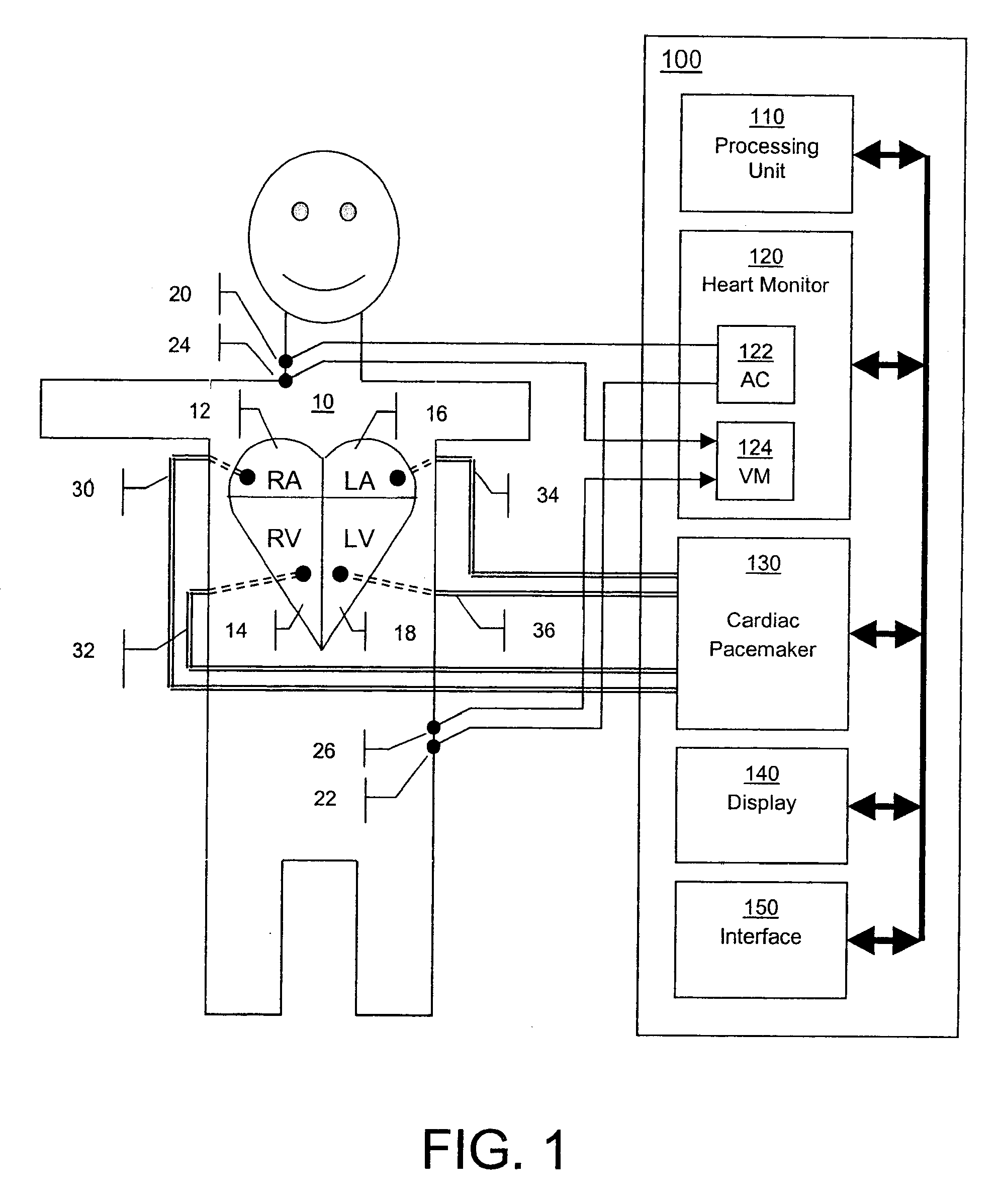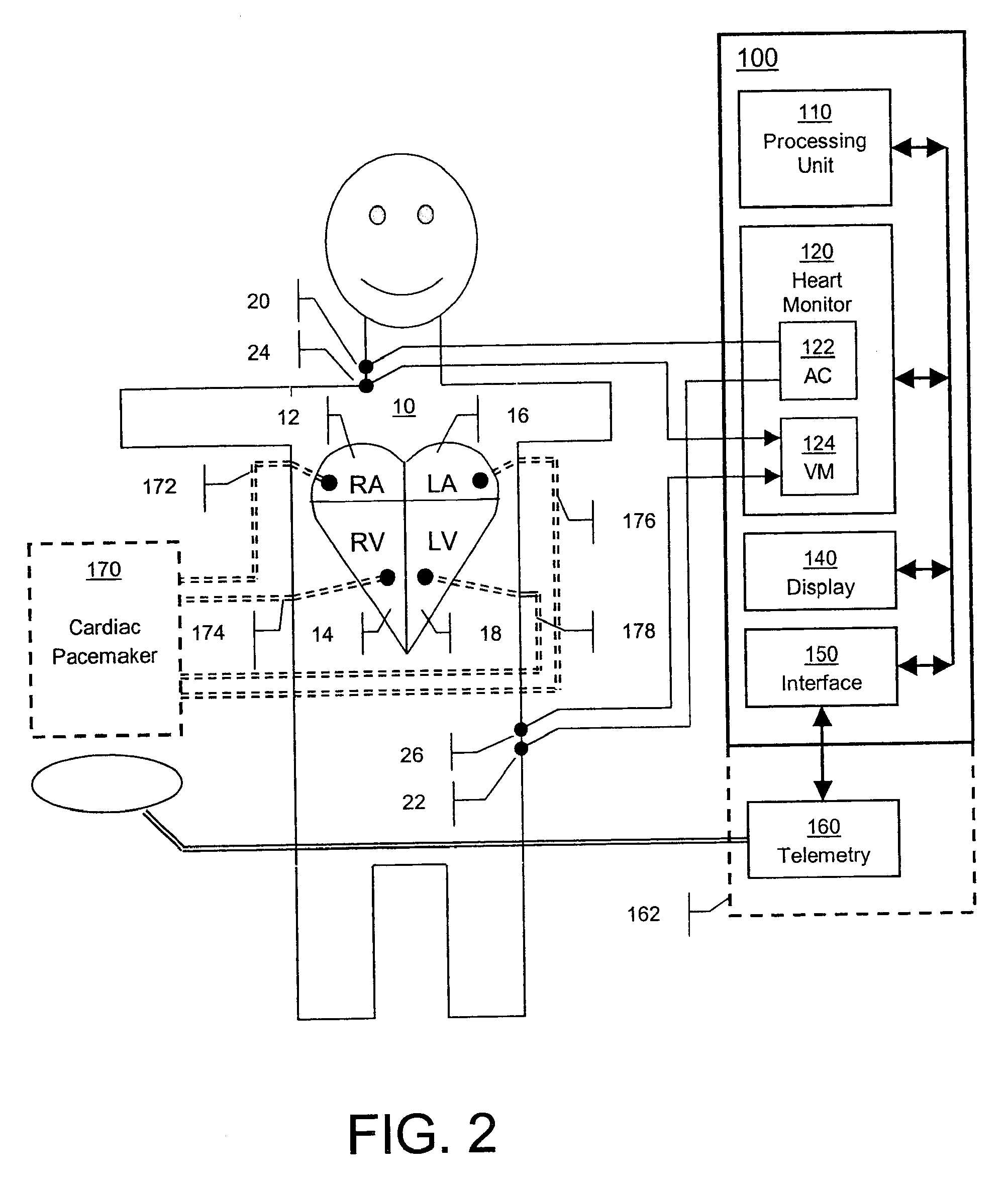Method and apparatus for automatic determination of hemodynamically optimal cardiac pacing parameter values
a technology of automatic determination and parameter value, applied in the field of cardiac rhythm management, can solve the problems of observer-dependent, time-consuming, and costly, and achieve the effect of significantly improving the time-efficacy of an otherwis
- Summary
- Abstract
- Description
- Claims
- Application Information
AI Technical Summary
Benefits of technology
Problems solved by technology
Method used
Image
Examples
Embodiment Construction
[0026] Certain embodiments as disclosed herein provide for a method and system for automatic determination of hemodynamically desirable cardiac pacing parameter values. Embodiments are employed, for example, but not limited to, in a Pacing System Analyzer (PSA) or external cardiac pulse generator (temporary cardiac pacemaker).
[0027] After reading this description it will become apparent to one skilled in the art how to implement the invention in various alternative embodiments and alternative applications. However, although various embodiments of the present invention will be described herein, it is understood that these embodiments are presented by way of example only, and not limitation.
[0028]FIG. 1 shows a patient 10 and his stylized heart containing four chambers: right atrium 12, right ventricle 14, left atrium 16 and left ventricle 18. In the preferred embodiment shown, surface ECG-type electrodes as part of an electrode array are attached to the patient's right side of neck...
PUM
 Login to View More
Login to View More Abstract
Description
Claims
Application Information
 Login to View More
Login to View More - R&D
- Intellectual Property
- Life Sciences
- Materials
- Tech Scout
- Unparalleled Data Quality
- Higher Quality Content
- 60% Fewer Hallucinations
Browse by: Latest US Patents, China's latest patents, Technical Efficacy Thesaurus, Application Domain, Technology Topic, Popular Technical Reports.
© 2025 PatSnap. All rights reserved.Legal|Privacy policy|Modern Slavery Act Transparency Statement|Sitemap|About US| Contact US: help@patsnap.com



